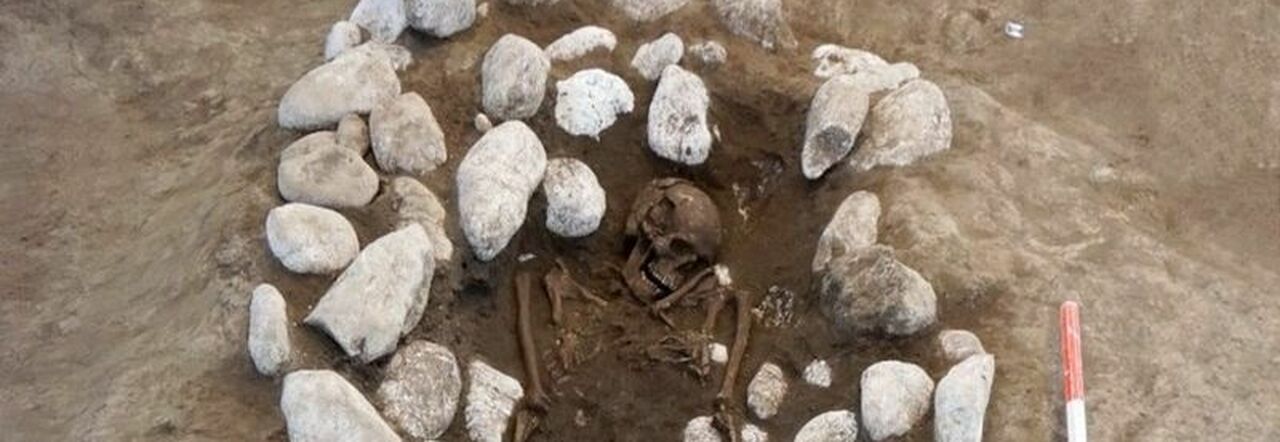Pre-Roman Necropolis Discovered in Valle Telesina

Wednesday 24 April 2024, 17:10 - Last updated :
25 April, 18:31
3 Minutes of Reading
The Archaeology, Fine Arts and Landscape Superintendence (Sabap) for the provinces of Caserta and Benevento presented to the Municipality of Amorosi, during a press conference, the exceptional discovery of a necropolis from the pre-Roman era in the Valle Telesina municipality, characterized by rich funeral outfits.
The necropolis was found during preventive investigation activities and archaeological excavation in the area where the future electric station of Terna spa will be built, functional to the connection to the National Electric Transmission Network of the Italian Railway Network for the 'High Speed' 'Napoli-Bari', specifically the 'Frasso Telesino - Telese' section. Terna's intervention also includes the construction of a second electric station, in the municipality of Telese Terme, and the connections of the new stations with the local distribution network as well as those between them. The event was attended by Carmine Cacchillo, Mayor of Amorosi, the Forza Italia deputy Francesco Maria Rubano, the Superintendent for the provinces of Caserta and Benevento Gennaro Leva, Andrea Martelli, Archaeologist of the Superintendence, Michela Frapporti, Head of Archaeology in Development Projects of Terna, and the Head of Authorizations and Concertation Center South Tyrrhenian Area of Terna Chiara Pietraggi.
The discovery of the extensive archaeological area near the Volturno river thus occurred during the preventive verification of archaeological interest within the process of designing the work, conducted by the Terna client with the scientific direction of the Superintendence of Caserta and Benevento; based on the evidence found during the first phase of the construction site, more extensive archaeological excavations were initiated to verify the consistency and preservation of the archaeological context. Although the excavation of the site has brought to light various levels of attendance, from prehistoric times to the late ancient age, the best-preserved archaeological evidence concerns the large funeral area, attested between the final phases of the Iron Age and the advanced Orientalizing period (third quarter of the 8th - second half/end of the 7th century BC).
A total of 88 burials were excavated on an area of about 13,000 square meters. The contexts were referable to the so-called 'Pit tomb culture' that characterizes the internal Campania before the emergence of the Samnites. The funeral outfits presented gender differences, in the male tombs weapons were present, while in the female ones rich ornaments composed of bronze ornament objects such as fibulae, bracelets, pendants, elements in amber and worked bone. The outfits also included large quantities of vases of different shapes, often stacked on top of each other, generally placed at the feet of the deceased in a reserved space. Some burials were then distinguished by characters of exceptionality with the presence of objects of particular prestige, such as a large bronze belt richly decorated or laminated bronze vases that recall the princely rank burials attested in Campania in the Orientalizing period.
The element of greatest monumentality, however, consisted of two large tumulus burials characterized by the presence of imposing circles with a diameter of about 15 meters which were certainly relevant to the elites of the society of the time. Given the importance of the findings, the Superintendence requested the support of Terna Spa for the initiation of a vast project of study and documentation of the discoveries emerged, using professionals and experts who carried out micro-excavation activities of the lands inside the recovered containers and preliminary restoration of the materials, anthropological analysis of the bone remains and archaeobotanical analysis of the soils. 'The integration of preventive archaeology at different levels of design - explained the Superintendent Leva - starts from a careful study of the territory already from the very first feasibility phases and until the realization of the work and the restitution to the territory of artifacts, information, documents, and knowledge that are heritage of everyone. The case of Amorosi is a concrete example of the profitable and synergistic collaboration between the client and the Entities involved in the important authorization process' he concluded.
© ALL RIGHTS RESERVED
This article is automatically translated
This article is automatically translated
